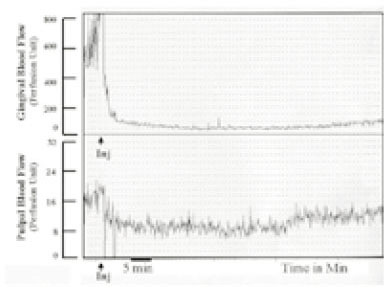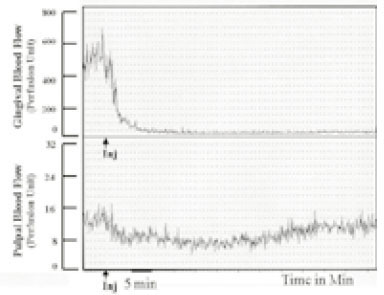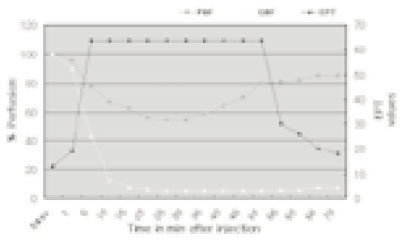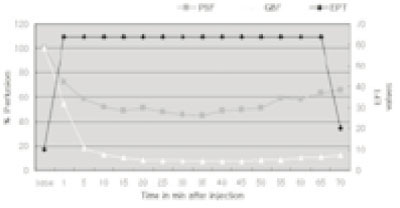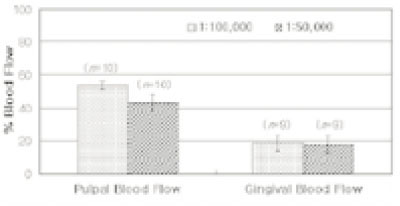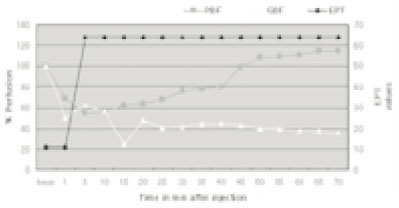J Korean Acad Conserv Dent.
2003 Nov;28(6):475-484. 10.5395/JKACD.2003.28.6.475.
The influence of epinephrine concentration in local anesthetics on pulpal and gingival blood flows
- Affiliations
-
- 1Department of Conservative Dentistry, School of Dentistry, Kyungpook National University, Korea. skykim@knu.ac.kr
- KMID: 2175622
- DOI: http://doi.org/10.5395/JKACD.2003.28.6.475
Abstract
- No abstract available.
Keyword
Figure
Cited by 3 articles
-
Biologic response of local hemostatic agents used in endodontic microsurgery
Youngjune Jang, Hyeon Kim, Byoung-Duck Roh, Euiseong Kim
Restor Dent Endod. 2014;39(2):79-88. doi: 10.5395/rde.2014.39.2.79.Cardiovascular effect of epinephrine in endodontic microsurgery: a review
Youngjune Jang, Euiseong Kim
Restor Dent Endod. 2013;38(4):187-193. doi: 10.5395/rde.2013.38.4.187.Effect of local anesthesia on pulpal blood flow in mechanically stimulated teeth
Wan-Sik Chu, Seung-Ho Park, Dong-Kuk Ahn, Sung Kyo Kim
J Korean Acad Conserv Dent. 2006;31(4):257-262. doi: 10.5395/JKACD.2006.31.4.257.
Reference
-
1. Cawson RA, Curson I, Whittington DR. The hazards of dental local anesthetics. Br Dent J. 1983. 154:253–258.
Article2. Gray RJM, Lomax AM, Rood JP. Periodontal ligament injection: with or without a vasoconstrictor? Br Dent J. 1987. 162:263–265.
Article3. Sisk AL. Vasoconstrictors in local anesthesia for dentistry. Anesth Prog. 1993. 39:187–193.4. Kim S, Rethnam S. Hemostasis in endodontic microsurgery. Dent Clin Nor Am. 1997. 41:499–511.5. Kim S. Kim S, editor. Anesthesia and hemostasis. Color Atlas of Microsurgery in Endodontics. 2001. Philadelphia: Saunders;63–71.6. Kim S. Stephen C, Richard CB, editors. Endodontic microsurgery. Pathways of the pulp. 2002. 8th ed. St. Louis: Mosby;693–696.7. Kim S. Regulation of pulpal blood flow. J Dent Res. 1985. 64(Special Issue):590–596.
Article8. Ebihara A, Suda H. PBF assessed by laser Doppler flowmetry in a tooth with a horizontal root fracture. Oral Surg Oral Med Oral Pathol Oral Radiol Endod. 1996. 81:229–233.
Article9. Gazelius B, Edwall L. Restored vitality in luxated teeth assessed by laser Doppler flowmeter. Endod Dent Traumatol. 1988. 4:265–268.
Article10. Watson ADM, Pitt Ford TR, McDonald F. Blood flow changes in the dental pulp during limited exercise measured by laser Doppler flowmetry. Int Endod J. 1992. 25:82–87.
Article11. Meyer MW, Path MG. Blood flow in the dental pulp of dogs determined by hydrogen polarography and radioactive microsphere methods. Arch Oral Biol. 1979. 24:601–605.
Article12. Pohto M, Scheinin A. Microscopic observation on living dental pulp, 1. Method for intravital study of circulation in rat incisor pulp. Acta Odontol Scand. 1958. 16:303–314.
Article13. Kim S, Lipowsky HH, Usami S, Chien S. Arteriovenous distribution of hemodynamic parameters in the rat dental pulp. Microvasc Res. 1984. 27:28–38.
Article14. Kim S, Liu M, Markowitz K, Bilotto G, Kim JD. Comparison of pulpal blood flow in dog canine teeth determined by the laser Doppler and 133Xenon washout methods. Arch Oral Biol. 1990. 35:411–413.
Article15. Meyer MW. Methodologies for studying pulpal hemodynamics. J Endod. 1980. 6:466–472.
Article16. Riva C, Ross B, Benedek GB. Laser Doppler measurements of blood flow in capillary tubes and retinal arteries. Invest Ophthalmol. 1972. 11:936–944.17. Perimed . The art of microvascular perfusion measurements. User's manual. 1993.18. Gazelius B, Olgart L, Edwall B. Noninvasive recording of blood flow in human dental pulp. Endod Dent Traumatol. 1986. 2:219–221.
Article19. Olgart L, Gazelius B, Lindh-Stromberg U. Laser Doppler flowmetry in assessing vitality in luxated permanent teeth. Int Endod J. 1988. 21:300–306.
Article20. Ban TW, Kim SK. Measurement of pulpal blood flow using a laser Doppler flowmeter. J Korean Acad Conserv Dent. 1999. 24:560–569.21. Ingolfsson A, Tronstad L, Hersh E, Riva C. Effect of probe design on the suitability of laser Doppler flowmetry in vitality testing of human teeth. Endod Dent Traumatol. 1993. 9:65–70.
Article22. Pitt Ford TR, McDonald F. Action of adrenaline on the effect of dental local anesthetic solutions. Endod Dent Traumatol. 1993. 9:31–35.
Article23. Ketabi M, Hirsch RS. The effects of local anesthetic containing adrenaline on gingival blood flow in smokers and non-smokers. J Clin Periodontol. 1997. 24:888–892.
Article24. Kim S, Edwall L, Trowbridge H, Chien S. Effects of local anesthetics on pulpal blood flow in dogs. J Dent Res. 1984. 63:650–652.
Article25. Hodgkin A, Huxley F. A quantitative description of membrane current and its application to conduction and excitation in nerve. J Physiol. 1952. 117:500–544.
Article26. Bennett CR. Monheim's local anesthesia and pain control in dental practice. 1978. 6th ed. St. Louis: Mosby;64–67.27. Edwall L, Scott D Jr. Influence of changes in microcirculation on the excitability of the sensory unit in the tooth of the cat. Acta Physiol Scand. 1971. 82:55–56.
Article28. Olgart L. Excitation of intradental sensory units by pharmacological agents. Acta Physiol Scand. 1974. 92:48–55.
Article29. Olgart L. The role of local factors in dentin and pulp in intradental pain mechanisms. J Dent Res. 1985. 64(Special Issue):572–578.
Article30. Gazelius B. Studies on the release and effects of putative mediators of pain in the dental pulp. 1981. Stockholm, Sweden: Karolinska Institute;[Thesis].31. Olgart L, Gazelius B. Effects of adrenaline and felypressin (Octapressin) on blood flow and sensory nerve activity in the tooth. Acta Odontol Scand. 1977. 35:69–75.
Article32. Tonder K, Kvinnsland I. Micropuncture measurements of interstitial fluid pressure in normal and inflamed dental pulp in cats. J Endodont. 1983. 9:105–109.
Article33. Jyvasjarvi E, Narhi M, Virtanen A. Differential blockade of intradental A-delta fibers by ischemia. J Dent Res. 1983. 62(Special Issue):35.34. Kim S. Ligamental injection: A physiological explanation of its efficacy. J Endod. 1986. 12:486–491.
- Full Text Links
- Actions
-
Cited
- CITED
-
- Close
- Share
- Similar articles
-
- Effect of local anesthesia on pulpal blood flow in mechanically stimulated teeth
- An Experimental Study about the Effect of Local Anesthesia on Skin Flap Survival
- Gow-Gates Mandibular Nerve Block Anesthesia: Is It an Old Forgotten Technique?
- Vital Sign Changes to an iv Test Dose of Epinephrine and Lidocaine with and without Glycopyrrolate Pretreatment
- A study on the influence of epinephrine contained in dental local anesthetic agents on the blood sugar of diabetes during minor oral surgery

